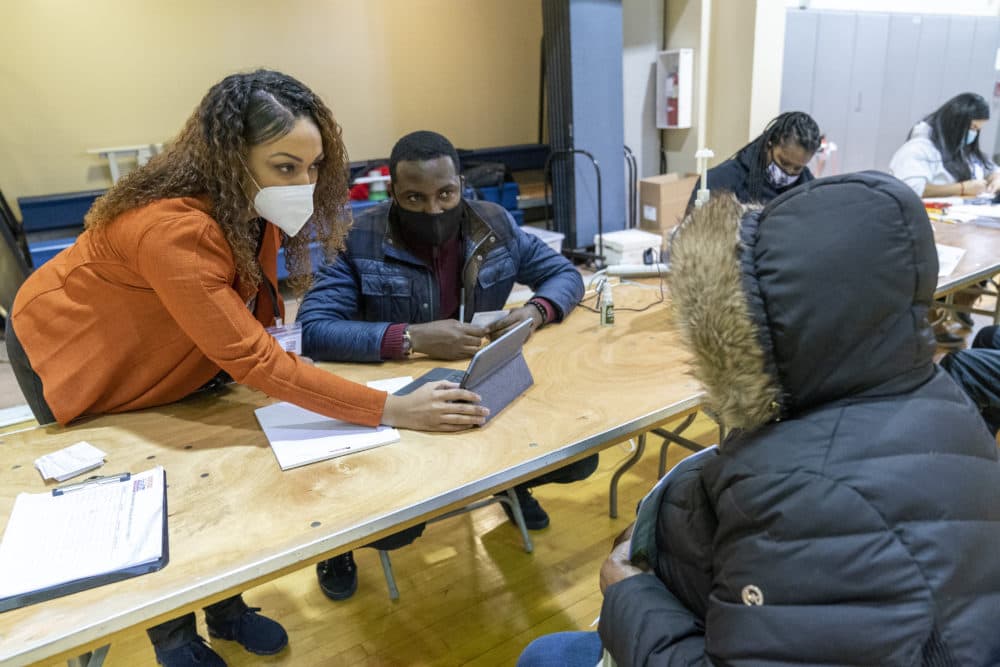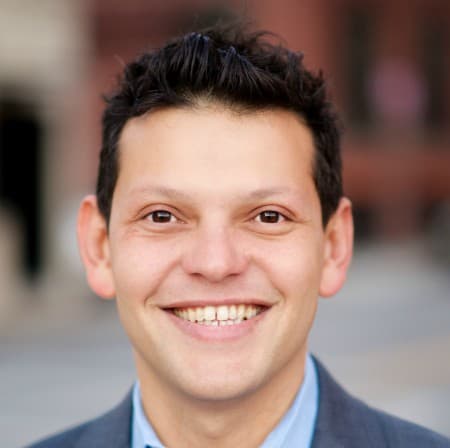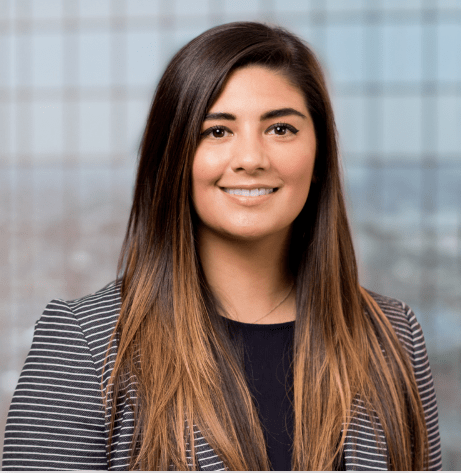Advertisement
Commentary
How A Community Center In Boston Got More Shots Into Arms

“Hola, ¿ha sido vacunado?”
This simple question — "Hello, have you been vaccinated?” — repeated by volunteers from Lawyers for Civil Rights, stationed outside the Veronica Robles Cultural Center, proved to be the key to vaccinating approximately 50 individuals in East Boston on April 26, 2021. Through a partnership between the Greater Boston Latino Network, the Veronica Robles Cultural Center, the City of Boston, and the Consulates of Mexico, Colombia, and Honduras, this clinic provided a total of 150 vaccinations — a third of which were administered to walk-ins — within a predominantly Spanish-speaking community.
As of this week in Massachusetts, vaccines are available on a walk-in basis at six mass vaccination sites. This marks a shift in the state’s distribution strategy, announced last week by Governor Charlie Baker, and both the state and federal government posit that it is an important step to getting even more shots into arms.
But while the state’s mass vaccination sites have proved efficient, community-based sites provide a much-needed personal and humanizing touch to the vaccine experience, particularly for those who speak languages other than English or continue to have concerns about COVID-19 vaccines.
By bringing vaccines directly to trusted community centers — such as La Colaborativa in Chelsea, the Brazilian Workers Center (BWC) in Allston, Hyde Square Task Force in Jamaica Plain, and Villa Victoria in the South End — vaccine equity advocates can connect directly with those whom the state’s vaccination program continues to leave behind, namely Black, Latinx and immigrant individuals. Dr. Natalicia Tracy, the executive director of the BWC, is currently managing a waitlist of over 2,000 people who are eager to get vaccinated but would prefer to do so at the BWC, rather than at Fenway Park, just two miles down the road.
What motivates this choice? The comfort of knowing that you will be warmly greeted in your native language, by familiar faces, and will not be treated as simply another body in the mass-vaccination assembly line. The empowerment that comes from building community through a shared experience, especially when you see friends and neighbors also receiving the vaccine. The security of knowing that you will not be asked for identification documents, grilled about immigration status, or questioned about health insurance. The relief of knowing you will not have to navigate the state’s challenging and labyrinthian appointment scheduling process. This constellation of factors plays out with profound cultural-competence and linguistic accessibility.
Advertisement
These dynamics cannot be replicated by mass vaccination centers. They speak to the need for heavier federal, state and municipal investment to deepen and expand community-based vaccination campaigns, particularly in non-traditional settings such as housing developments and congregations. Much of this could be accomplished through the deployment of mobile COVID-19 vaccination units, building on the model championed by the Whittier Street Health Center.
As he rolled up his sleeve, his daughter excitedly told a friend over the phone that her father was getting vaccinated.
Long waitlists at neighborhood organizations and successful street campaigns to inoculate passersby suggest that there is, in fact, a great degree of vaccination interest within the communities mistakenly pegged as having high levels of “vaccine hesitancy.” Indeed, many people approached outside of the clinic at the Veronica Robles Cultural Center, when asked if they had already been vaccinated, proudly responded, “Sí, claro!” (“Yes, of course!”)
For many of those who had not, the combination of a direct, personal and bilingual invitation to get vaccinated, with the convenience of the neighborhood location and lack of complicated registration process, proved to be the tipping point. If we hope to vaccinate the number of people required to achieve herd immunity, these efforts at humanizing the vaccination process — along with other incentives — will be critical.
At the end of the six-hour clinic at the Veronica Robles Cultural Center, medical staff and volunteers applauded as the 150th vaccine recipient — a walk-in — approached the check-in table with his children. As he rolled up his sleeve, his daughter excitedly told a friend over the phone that her father was getting vaccinated. In the background, lively music played while a masked group of Chilean folkloric dancers, several of whom were vaccinated that afternoon in the very same room, prepared for rehearsal.
It may not be the scene that first comes to mind when you think of a vaccination clinic, but perhaps it is the comforting and familiar environment we need to humanize the vaccine experience.
If it sounds celebratory, that’s because it is.

